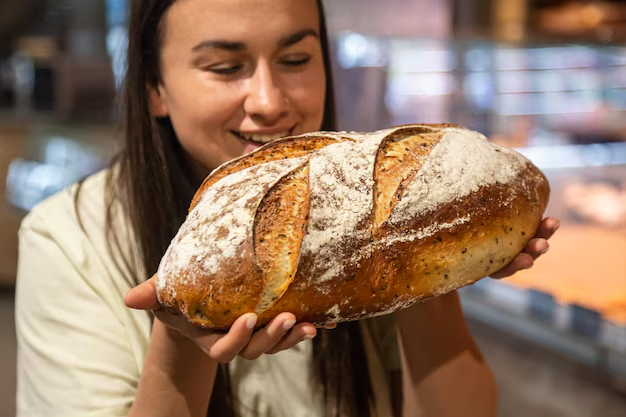Does Bread Mold Faster in the Refrigerator? An In-Depth Guide
You've probably found moldy bread in your pantry or fridge and wondered if there's a better way to store it to prolong its freshness. The question many people ask is: Does bread mold faster in the refrigerator? The answer might surprise you and could change your approach to storing bread entirely.
🥯 Understanding Why Bread Molds
Before diving into the effects of refrigeration, it's crucial to understand why bread molds in the first place. Mold on bread is typically caused by spores from the air settling on its surface. These spores thrive in environments where there is moisture and warmth, which provides the perfect setting for mold growth.
Key Factors Influencing Mold Growth on Bread:
- Moisture: Molds need moisture to flourish. Damp surfaces and high humidity can speed up the mold growth process.
- Temperature: Warm environments are generally more conducive to mold than cooler ones.
- Oxygen: Like most living organisms, mold requires oxygen to grow.
🌡️ Refrigeration and Its Impact
Does the Refrigerator Help?
The refrigerator might seem like a good place to keep bread fresh, considering it provides a cool environment that typically slows down the growth of bacteria and mold. However, for bread, refrigeration can be a double-edged sword.
Pros of Refrigerating Bread:
- Slows Mold Growth: The colder environment slows the metabolism of mold spores.
- Preservation: Can be beneficial for certain types of bread, such as those with high water content (e.g., rye or sourdough).
Cons of Refrigerating Bread:
- Staling: Bread tends to stale faster in the refrigerator due to retrogradation, where starches crystallize and harden.
- Texture Loss: Bread can become dry and hard, losing its softness and fluffiness.
The Science Behind Staling
Refrigeration can accelerate staling, which happens because starch molecules in bread, initially gelatinized during baking, start to crystallize upon cooling. This process is faster at refrigerator temperatures, leading to a firm and crumbly loaf.
🏠 Alternative Storage Solutions
If refrigerating isn't the perfect solution, what are the alternatives? Here’s how you can keep your bread fresher for longer:
1. Room Temperature Storage
For short-term storage, keeping bread at room temperature in a sealed container or bread box is ideal for retaining softness. Just ensure that the container is airtight to reduce exposure to moisture and air.
2. Freezing Bread
If you're looking to store bread for more than a few days, freezing is your best bet. When done correctly, freezing can preserve the freshness and quality of bread for weeks or even months.
How to Freeze Bread Properly:
- Slice the bread beforehand for convenience.
- Wrap in plastic wrap or aluminum foil to ensure no air can get in.
- Place the wrapped bread in a resealable freezer bag.
- To defrost, leave it at room temperature or warm it briefly in the oven.
3. Bread Boxes
A bread box provides a balance of moisture and air circulation, helping to keep bread fresh without hastening mold growth or staling. They prevent excess moisture that can lead to mold while also keeping out spores.
👩🍳 Practical Tips for Keeping Bread Fresh
Here are some quick tips to maintain freshness and flavor:
- Buy Fresh, Local Bread: Locally baked bread usually lacks the preservatives found in commercially produced bread, offering a fresher taste.
- Opt for Whole Loaves: Whole loaves take longer to stale compared to pre-sliced ones.
- Seal It Up: Always seal bread tightly to protect it from air and moisture.
- Check for Ingredients: Some breads have natural preservatives like vinegar or salt that can extend shelf life.
🍞 Can Different Breads Mold at Different Rates?
Different types of bread mold at varying rates based on their ingredients and moisture content. Here's how some popular varieties compare:
- White Bread: Has preservatives but also high moisture, making it more susceptible to mold.
- Whole Wheat Bread: Spoils faster due to higher oil content.
- Sourdough Bread: Naturally resistant to mold due to its low pH level.
📜 Key Takeaways
Here’s a summary to make it all skimmable and actionable:
| Action | Pro | Con |
|---|---|---|
| Refrigerate | ❄️ Slows mold growth | 🚫 Accelerates staling |
| Room Temperature | 🥖 Keeps bread soft | 🍞 Shorter shelf life |
| Freeze | 🕒 Keeps bread fresh for months | 🌡️ Must plan for defrosting |
| Bread Box | 📦 Balances moisture | ⚠️ Hinges on good box design |
Practical Tips:
- Choose whole loaves over pre-sliced.
- Avoid moisture; always seal and store properly.
- Freeze for long-term storage.
🌟 Conclusion
Understanding how different storage conditions affect mold growth and bread quality can help you make informed decisions about how best to keep your bread. While refrigeration may slow down the growth of mold on bread, it can hasten staling, making freezing or room-temperature storage better options depending on your needs. Remember, the freshness and quality of your bread depend largely on how you store it, so choose the method that best matches your consumption habits.
Whether you love the smell of fresh bread in the morning or enjoy the convenience of having it ready for a sandwich, these insights ensure your bread remains as delightful as the moment you bought it.
